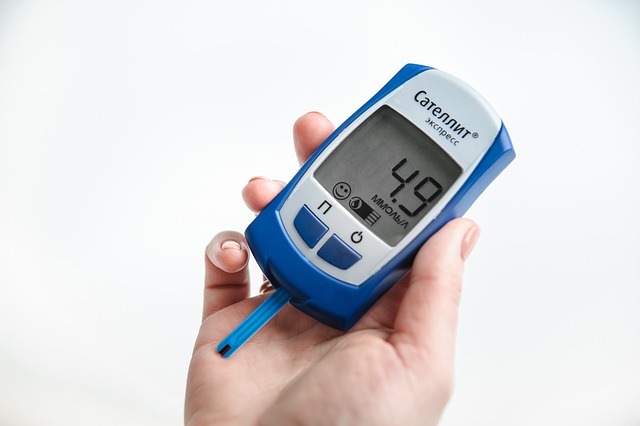In this article:
- Setpoint is the idea that your body is programmed to be within a certain weight range.
- Your setpoint is your body's preferred weight under a specific set of circumstances like what you eat, your physical activity, your sleep, and stress management.
- Responses like slowed metabolism and changes in hormones like leptin can make it harder to prevent weight gain after losing weight.
- You can lower your setpoint with dietary and other lifestyle changes.
- Lark can help you manage weight with or without GLP-1s as you log food, get tips for eating healthier, and make small changes that can turn into healthy habits.
Have you heard that weight maintenance is harder than weight loss? Maybe you've even experienced it yourself if you've lost weight and had trouble keeping it off.
You're not alone. In fact, science supports that keeping weight off long-term is challenging. Some people regain lost weight within 12 months, and overall, more than 80% of lost weight is regained within 5 years.
If it feels like your body is fighting your weight loss, you may think about blaming a high setpoint. Is your setpoint the true culprit? Here's what you should know about why your body seems to want to gain weight back, and what you can do to lower your body's setpoint.
What Is a Setpoint?
Setpoint is the idea that your body is programmed to be within a certain weight range. It's a controversial theory, and there's no proof that people have unchangeable setpoints.
People who believe in setpoints point to families who have similar body types. They also point to evidence that people who lose weight tend to gain it back.
Still, evidence suggests that an individual’s setpoint is modifiable. There are people who successfully lose a good amount of weight and keep it off long-term.
Another Way to Look at Setpoint
There's a more empowering and realistic way to look at setpoint rather than thinking of it as predetermined. You can think of setpoint as your body's preferred weight under a certain set of circumstances, and those circumstances can change.
Here are some factors that may affect setpoint.
- Diet patterns
- Physical activity routines
- Sleep habits
- Stress management
By changing these, you are changing your circumstances which can lead to a different setpoint.
How Weight Loss Can Affect Setpoint
When you lose weight, your body experiences some changes that can make it harder to maintain a lower body weight. These changes lead to burning fewer calories and consuming more calories, which is a balance that promotes weight gain.
For example, your metabolism can slow, which means you burn fewer calories. This can happen because your body weight is lower so you’re burning fewer calories at rest and when you do the same amount of exercise. This can also happen because your body can enter starvation mode if it notices that it’s not getting as much food, as it was before.
There are a couple of factors that can lead to taking in more calories. For example, you might initially have lower levels of leptin, which is a hormone that makes you feel full and satisfied after a meal. Or you might be less watchful over your food consumption and portions might increase.
While these factors can work against your goal to lose weight or maintain weight loss, there are ways to lower your setpoint.
How to Lower Your Setpoint
1. Check portion sizes

While you may start off by watching portion sizes while you’re losing weight, many people eventually pay less attention. As portions grow, so do the calories that you consume, which means you can regain weight.
Keep calories down by filling most of your plate or bowl with large portions of low-calorie foods like salad greens, other non-starchy vegetables, and fresh or unsweetened frozen fruit. These types of foods can help fill you up without adding many calories.
Limit portion sizes of calorie-dense, low-nutrient foods like fried food, fatty meats, butter, and sweets. Because they’re so high in calories, reducing portion sizes can make a big difference in maintaining weight loss.
2. Eat more slowly

Levels of the hormone leptin may decrease as you lose weight. That can make it harder to feel satisfied after a meal, but eating more slowly can increase your feelings of satisfaction by giving your body time to register that it’s full. Aim to take 20 minutes to eat your meal. Over months, your leptin levels are likely to return to near their initial levels.
3. Eat more protein

Eating more lean protein is a strategy that people who successfully keep weight off tend to use. Protein keeps you full for longer after a meal, so you don’t eat as much at the next meal. Plus, it supports lean muscle mass and metabolism. Examples of lean proteins include fish, egg whites, reduced-fat dairy products, beans, skinless chicken, and lean ground turkey.
4. Choose low-fat foods

Another common trend that successful losers have is that they choose low-fat foods like low-fat dairy products, skinless chicken instead of chicken with skin, and non-fat yogurt. These versions are lower in calories than higher-fat counterparts.
5. Have more fiber

It’s a good idea for most people to get more fiber anyway because the typical American gets less than half of their recommended amount and because it’s in nutritious foods like vegetables, fruit, whole grains, beans, nuts, and seeds. You can use a high-fiber diet to lower your body’s setpoint because it can help reduce blood sugar swings, leading to less hunger and fewer sugar cravings.
6. Exercise more

Your current setpoint may be based on your current physical activity levels. Guidelines for healthy adults say to aim for 150 minutes per week for weight loss and health. For weight maintenance after loss, you may be able to lower your setpoint by getting 300 minutes per week of moderate to vigorous intensity physical activity, as long as your healthcare provider approves.
7. Add muscle-strengthening exercises

Muscle-strengthening exercises are part of the Physical Activity Guidelines for Americans, and achieving the guidelines can help lower your setpoint. Maintaining or adding muscle mass supports higher metabolism, so you burn more calories.
8. Support yourself

Improving standard health behaviors like getting enough sleep and managing stress can help lower your setpoint by balancing hormones, improving your ability to make good decisions around food, and reducing cravings for high-calorie, sugary, fatty foods.
9. Follow a regular schedule

As much as possible, following a regular schedule supports your healthy behaviors. Eating at consistent times lets you predict and notice hunger levels. Having a consistent bedtime and wake time lets your body’s sleep hormones support sleep and tissue repair during sleep.
10. Drink more water

Drinking more water can help fill you up, so it’s easier to eat less. It’s a simple way to counter your body’s efforts to regain weight!
Monitoring your diet, activity, and weight can help you stay on track as well.
How Lark Can Help
Weight loss and management are easier when you have the foods you need, so it’s important to know how to select the best options. Lark offers additional tools and support. Your Lark coach is available 24/7 for nutrition and physical activity coaching and tracking. Lark can help you make healthy choices and establish habits that fit into your lifestyle so you can lose weight and keep it off with or without GLP-1 medications.
Click here to see if you may be eligible to join Lark today!











.webp)






